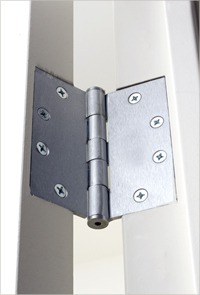Aligning Hinge and Strike Spacing: A Tip for Retrofits

It’s essential to match the hinge and strike locations to the existing frames when ordering doors for a retrofit project. Failure to do so will result in doors arriving at the jobsite with spacings that don’t align! This could delay a project for weeks because hardware location modifications can rarely be performed in the field, especially with fire rated doors.
The Steel Door Institute’s technical document SDI-129 Hinge and Strike Spacing addresses the aforementioned scenario by listing the hinge and strike spacing dimensions for all past and present SDI manufacturers. Field verification of hardware locations is still recommended.
SDI contacts its members on a recurring basis to verify their hinge and strike locations. The most recent version of SDI-129 was just published in December 2014 and includes a new manufacturer along with revised dimensions for others. The previous version of the standard was viewed more than 3,400 times during the two years it was posted on the SDI website.
Unless architects are contacting the same provider for a re-order, SDI-129 should always be referenced when specifying new doors for existing frames. Doing so will ensure the project isn’t “left hanging” by receiving doors that don’t match the hardware locations.
New Steel Door Institute Video
This video introduces the Steel Door Institute and covers the benefits of specifying SDI. Other SDI videos cover frame installation, tornado doors, fire rated doors, and more.
Did you Know?
Blast resistant doors are becoming more common in specifications, but often these specs can be met with standard steel doors tested and certified for such applications. The “bank-vault” door often associated with blast-resistance is only necessary to meet the most extreme requirements. Don’t over-specify!

